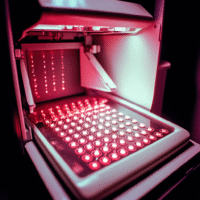Understanding the Study Results
This study looked at how to improve the detection of prostate cancer in a specific area of the prostate called the transition zone (TZ). The researchers wanted to see if a new biopsy method could help find cancer in this area better than the standard methods.
What Worked?
- The new biopsy method that included more samples from the TZ (called 8PZ + 10TZ + X) showed similar success in finding significant cancer compared to the standard method.
- Both methods were effective without causing more complications for patients.
What Didn’t Work?
- The standard biopsy methods (like 8PZ + 4TZ + X) were not as effective in detecting cancer in the TZ compared to the peripheral zone (PZ).
How Does This Help Patients and Clinics?
- Patients may receive a more accurate diagnosis of prostate cancer in the TZ, leading to better treatment options.
- Clinics can adopt the new biopsy strategy to improve patient outcomes and potentially reduce the number of missed diagnoses.
Real-World Opportunities
- Hospitals can start using the new biopsy method to enhance cancer detection rates.
- Doctors can educate patients about the benefits of this improved biopsy strategy.
Measurable Outcomes
- Clinics should track the number of successful cancer detections in the TZ using the new method.
- Monitor patient outcomes and any complications arising from the biopsy procedures.
AI Tools to Consider
- AI tools can help analyze biopsy images and improve the accuracy of cancer detection.
- Consider using AI software that assists in planning and executing biopsies more effectively.
Step-by-Step Plan for Clinics
- Start by training staff on the new biopsy method.
- Implement the new strategy with a small group of patients.
- Collect data on detection rates and patient outcomes.
- Gradually expand the use of the new method based on initial results.
For more detailed information about this research, you can read the full study here.





























